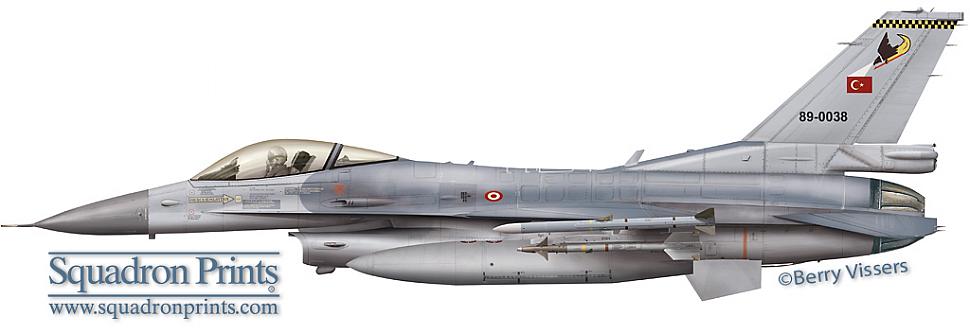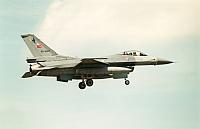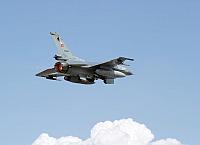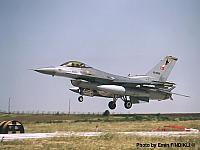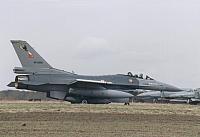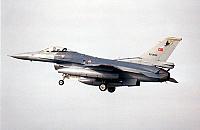 |
162 Filo ( TUAF)" Harpoon (Zipkin)" |
 |
162 Filo " Harpoon (Zipkin)" ( TuAF) | |||
| Status: |
Active
|
|||
| Version: | F-16C/D block 40 | |||
| Role: | Multirole, Attack | |||
| Tailband: | N/A | |||
| Motto: | N/A | |||
| Badge: | An eagle flying down on an arrow with the Turkish roundel on a yellow background. | |||
|
Reportedly disbanded on July 15th, 2016 or moved to Incirlik AB (to be confirmed).
|
||||
F-16 History
162 Filo was the second squadron at Bandirma AB to receive the new F-16. This happened almost simultaneously with 161 Filo, who converted in the same year. Like most squadrons within the Turkish Air Force, these are of the block 40 version. The F-16 replaced the F-104G Starfighter, as in most European NATO countries. The mission of the squadron thus was conventional attack as primary role, with a secondary air defence role. This did not change with the introduction of the F-16. It was just replacing an obsolete aircraft with a newer one with more capabilities. However, since the vintage F-104s were of the specialised reconnaissance version, this task wasn’t retained.
With the block 40 came new capabilities, resulting in the possibility to conduct night-time operations. In the first years of operating the F-16, this was not easy since the Turkish Air Force didn’t order targeting pods together with the aircraft. An order for LANTIRN pods was placed when the first aircraft were leaving the production line. 162 Filo had to wait until 1998 to receive their first pods after a second order was placed. This however, marked a dramatic change in missions that could be flown. From 1998 onwards the squadron was fully operational on the type with all mission profiles to be flown.
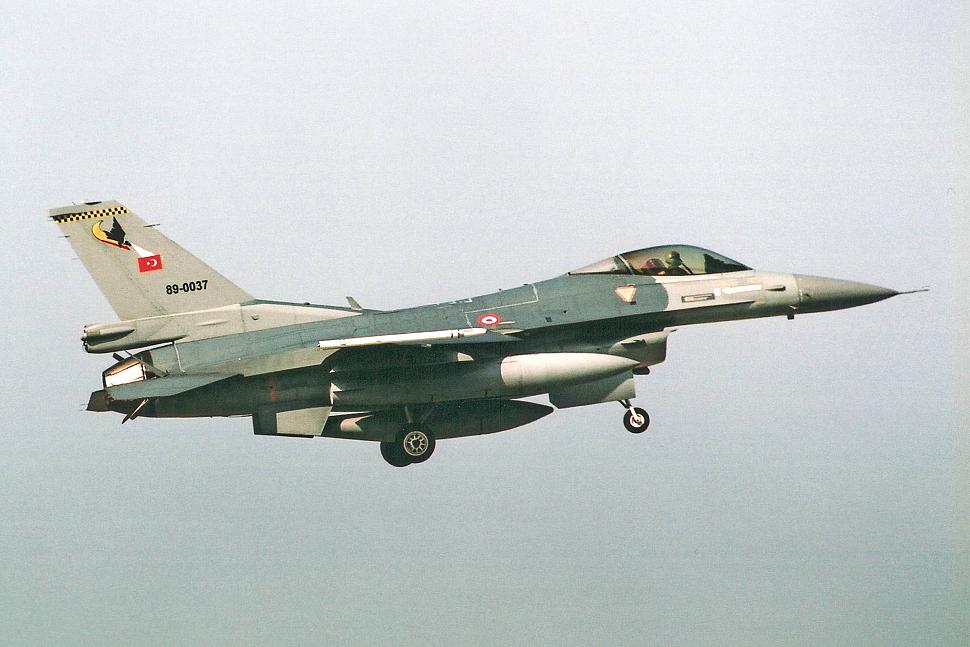
For a number of years, all F-16s squadrons within the Turkish Air Force are multi-role. This means they can handle all missions, but are specialised in one. With the CCIP program – which will start in 2009 – the aircraft will get an upgrade which will prolong their service life and introduce a completely new block 50 cockpit and advanced electronics.
Aircraft Markings History
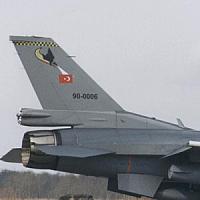
The tail consist of a standard grey tail with the Turkish flag in the center, the serial number at the bottom and the squadron's crest on top with a yellow and black checkered tailband.
Unit History
- 1943: Activation of the squadron in Gaziemir
- 1943: 'Kittyhawk' Mk. I (as II TB, part of 6A)
- 1945: 'Spitfire' Mk. VB
- 1946: 'Spitfire' Mk. V
- 1949: 'Spitfire' Mk. IX (part of 6AA, Bandirma)
- 1951: 'Spitfire' Mk. IX (re-designated 162 Filo, part of 6HU)
- 1952: P-47D 'Thunderbolt'
- 1953: F-84G 'Thunderjet'
- 1962: Disbanded
- 1970: Activation of the squadron in Bandirma
- 1970: F-5A 'Freedom Fighter' (part of 6AJU)
- 1974: RF-5A 'Freedom Fighter'
- 1983: RF-104G 'Starfighter'
- 1991: F-16C/D 'Fighting Falcon'
Deployments
 |
' Air Policing Baltic States' |
| Siauliai AB, Lithuania (March 31st, 2006 to July 31st, 2006) | |
| This operation started when Lithuania, Estonia and Latvia joined NATO. These countries don't have fighters themselves and rely upon NATO for there air coverage. This was the first Turkish rotation into Lithuania. |
F-16 Airframe Inventory
- All 162 Filo F-16s in our F-16 Aircraft Database (past and current aircraft)
- Current 162 Filo F-16s in our F-16 Aircraft Database
Photos
Special Thanks
Please use this form to add any list any error or omissions you find in the above text.
Note: your comments will be displayed immediately on this page. If you wish to send a private comment to the webmasters, please use the Contact Us link.

